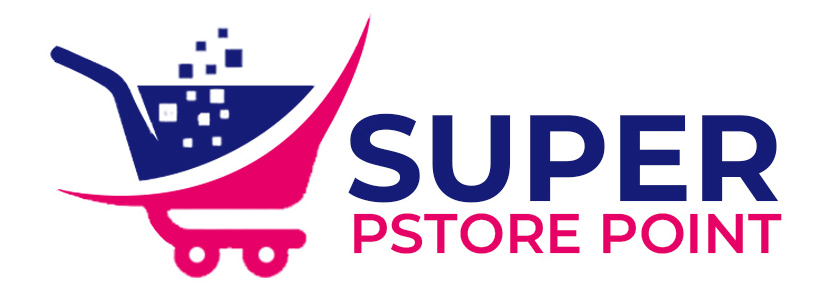In the healthcare industry, seasonality significantly impacts patient demand for various services. Flu season, allergy season, and holiday periods are just a few examples of times when certain healthcare services see a surge in demand. For healthcare providers, this seasonality presents a unique opportunity to tailor their marketing strategies to meet increased patient needs effectively. Google Ads, a powerful tool for reaching potential patients, can be optimized for these peak times to maximize engagement and conversions. In this article, we explore how healthcare providers can adjust their Google Ads campaigns for seasonal peaks, with insights into the role of a healthcare digital marketing agency india in crafting and executing these strategies.
Understanding Seasonality in Healthcare
Seasonality in healthcare refers to the predictable fluctuations in patient demand for specific services or treatments throughout the year. For instance, flu season typically peaks in the fall and winter, leading to increased demand for flu vaccinations and treatments. Similarly, spring and summer may see a rise in allergies, prompting more visits to allergists and requests for allergy medications. Understanding these patterns is crucial for healthcare providers looking to capitalize on peak times with targeted marketing efforts.
The Importance of Seasonal Campaigns in Google Ads
Google Ads allows healthcare providers to create targeted campaigns that align with seasonal trends, ensuring that their services are visible to patients actively seeking care. Seasonal campaigns are essential for several reasons:
- Increased Demand: During peak times, patients are more likely to search for specific healthcare services. Seasonal campaigns ensure that providers’ ads appear in these searches, increasing the likelihood of attracting new patients.
- Competitive Advantage: Not all healthcare providers may adjust their advertising strategies for seasonality. By doing so, those who do can gain a competitive edge by being more visible to potential patients.
- Cost Efficiency: Targeting ads during peak times can lead to higher conversion rates, improving the return on investment (ROI) for ad spend. This is especially true if campaigns are well-optimized and tailored to patient needs.
Strategies for Adjusting Google Ads During Peak Times
To effectively adjust Google Ads for seasonal peaks, healthcare providers should consider several strategies:
- Keyword Optimization: Identify and bid on seasonal keywords that potential patients are likely to use during peak times. For example, during flu season, keywords like “flu vaccine near me” or “flu symptoms treatment” can attract relevant traffic.
- Ad Copy and Creative: Update ad copy to reflect the season and the specific services being promoted. Highlight special offers, availability of seasonal treatments, or the importance of preventive care during certain times of the year.
- Budget Adjustment: Allocate more budget to campaigns during peak times to capture increased demand. Monitor spending and performance closely to ensure that the additional budget leads to proportional increases in conversions.
- Geo-Targeting: Focus ads on geographic areas experiencing higher demand for specific services. For example, if a particular region is experiencing a severe allergy season, targeting ads for allergy treatments in that area can be highly effective.
- Scheduling: Use ad scheduling to ensure that ads run during times when potential patients are most likely to search for healthcare services. This might include weekends, evenings, or early mornings, depending on the patient demographic.
- Remarketing: Implement remarketing strategies to re-engage users who have previously visited the website but did not convert. Seasonal reminders or special promotions can entice these users to take action.
- Landing Page Optimization: Ensure that landing pages are updated with relevant seasonal content and are optimized for conversions. This includes clear calls to action, easy navigation, and mobile optimization.
The Role of a Healthcare Digital Marketing Agency in India
Navigating the complexities of seasonal google ads management for healthcare providers focused on patient care. This is where a specialized healthcare digital marketing agency in India can provide invaluable assistance. These agencies offer expertise in creating and managing digital marketing campaigns tailored to the healthcare sector, ensuring compliance with regulations and maximizing campaign effectiveness.
Key Contributions of a Healthcare Digital Marketing Agency:
- Expertise in Healthcare Marketing: Agencies specializing in healthcare understand the unique challenges and opportunities within the sector. They can craft compelling ad copy, select appropriate keywords, and develop strategies that resonate with patients.
- Data-Driven Insights: A healthcare digital marketing agency in India can leverage data analytics to understand seasonal trends, patient behaviors, and campaign performance. This data-driven approach ensures that campaigns are continually optimized for better results.
- Regulatory Compliance: Healthcare advertising is subject to strict regulations to protect patient privacy and ensure accurate information. Specialized agencies are well-versed in these regulations and can ensure that all advertising complies with legal and ethical standards.
- Resource Efficiency: Partnering with a digital marketing agency allows healthcare providers to focus on delivering quality care while the agency handles the complexities of digital marketing. This partnership can lead to more efficient use of resources and better overall outcomes.
- Comprehensive Campaign Management: From strategy development to execution and reporting, a healthcare digital marketing agency provides end-to-end management of Google Ads campaigns. This includes everything from keyword research and ad creation to performance monitoring and optimization.
Measuring the Success of Seasonal Campaigns
To evaluate the effectiveness of seasonal Google Ads campaigns, healthcare providers should track several key performance indicators (KPIs):
- Click-Through Rate (CTR): This measures the percentage of people who click on an ad after seeing it. A higher CTR indicates that the ad is relevant and engaging to the target audience.
- Conversion Rate: The percentage of users who take a desired action (e.g., booking an appointment) after clicking on the ad. This metric helps assess the effectiveness of the landing page and overall campaign.
- Cost Per Click (CPC) and Cost Per Acquisition (CPA): These metrics indicate how much is being spent on each click and each new patient acquisition, respectively. Lower costs suggest a more efficient campaign.
- Return on Ad Spend (ROAS): This measures the revenue generated from the campaign relative to the amount spent. A higher ROAS indicates a more profitable campaign.
- Patient Feedback and Engagement: Gathering feedback from patients who respond to seasonal campaigns can provide insights into what aspects of the campaign were most effective and where improvements can be made.
Conclusion
Seasonal campaigns are a critical component of healthcare marketing, allowing providers to align their advertising efforts with fluctuations in patient demand. By strategically adjusting Google Ads to target relevant keywords, optimize ad copy, and allocate budgets effectively, healthcare providers can maximize their reach and attract new patients during peak times. Partnering with a healthcare digital marketing agency in India can further enhance these efforts, providing specialized expertise and comprehensive campaign management. As the healthcare landscape continues to evolve, staying attuned to seasonal trends and patient needs will be essential for successful marketing and patient engagement.










